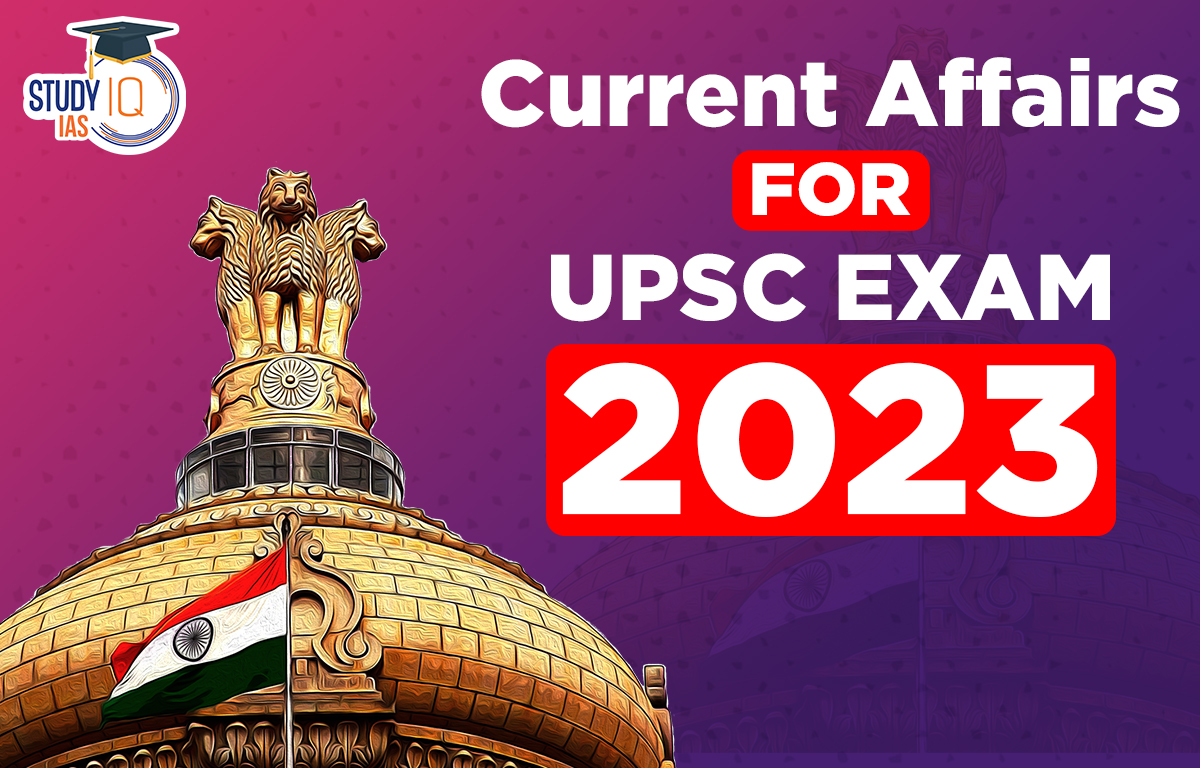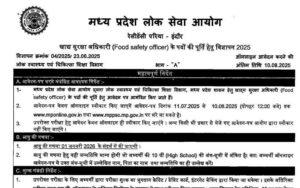Current Affairs 27th April 2023 for UPSC Prelims Exam
Autonomous District Council
Context: Meghalaya’s Khasi Hills Autonomous District Council (KHADC) is on a visit to Tripura to understand the functioning of the State’s tribal autonomous district council and interact with indigenous leaders.
About Autonomous District Council
- The Sixth Schedule of the Constitution of India allows for the formation of autonomous administrative divisions in accordance with Article 244.
- Most of these autonomous district councils are located in North East India but two are in Ladakh, a region administered as a union territory.
- Presently, 10 Autonomous Councils in Assam, Meghalaya, Mizoram and Tripura are formed by virtue of the Sixth Schedule with the rest being formed as a result of other legislation.

Special Provision of these Councils
- The Governor is empowered to increase or decrease the areas or change the names of the autonomous districts.
- While executive powers of the Union extend in Scheduled areas with respect to their administration in 5th schedule, the 6thschedule areas remain within executive authority of the state.
- The acts of Parliament or the state legislature do not apply to autonomous districts and autonomous regions or apply with specified modifications and exceptions.
- Judicial powers: Autonomous district councils have powers to form courts to hear cases where both parties are members of Scheduled Tribes and the maximum sentence is less than 5 years in prison.
- However, the jurisdiction of these councils is subject to the jurisdiction of the concerned High Court.
- Taxation and revenue: Autonomous district councils have powers to levy taxes, fees and tolls on: building and land, animals, vehicles, boats, entry of goods into the area, roads, ferries, bridges, employment and income and general taxes for the maintenance of schools and roads.
Article 244 of the Indian Constitution
- It deals with the administration of scheduled areas and tribal areas. It contained two provisions as follows:
- The provisions of the Fifth Schedule shall apply to the administration and control of the Scheduled Areas and Scheduled Tribes in any State other than the States of Assam, Meghalaya, Tripura and Mizoram.
- The provisions of the Sixth Schedule shall apply to the administration of the tribal areas in the States of Assam Meghalaya, Tripura and Mizoram.
Current Affairs 26th April 2023 for UPSC Prelims Exam
Triple Test for Surrogacy
Context: Karnataka High Court has evolved “triple tests” for considering the plea of a couple to have a child through altruistic surrogacy.
About Triple Test
- High Court has evolved the triple tests viz genetic test, physical test, and economic test, which the petitioner-husband has to pass to become eligible to become a father by surrogacy.
- Genetic Test: Since men experience a decrease in sperm health with age, they would have to undergo genetic test so that the child is not born with any disorder.
- Physical Test: Prospecting couple have to undergo a physical test to ascertain their physical capacity to manage the child as the life of the surrogate child would become miserable if they are infirm to handle the child.
- Economy Test: By filling statements on their assets and liabilities before the authorities concerned to ensure that they can protect the future of the child.
- High Court said that the authority concerned set up under the Act should consider the plea of the couple within eight weeks based on the triple tests and ascertaining the details of the intending surrogate mother.

Surrogacy Law in India
- Surrogacy is a practice whereby one woman bears and gives birth to a child for an intending couple. The child is handed over to the commissioned couple after birth.
- Surrogacy Law in India is monitored under the Surrogacy (Regulation) Act, 2021 (SRA) and the ART (Assisted Reproductive Technology Act) Regulation 2021.
- Under the Surrogacy (Regulation) Act, 2021, a woman who is a widow or a divorcee between the age of 35 to 45 years or a couple, defined as a legally married woman and man, can avail of surrogacy if they have a medical condition necessitating this option.
- The Act prohibits commercial surrogacy, but allows altruistic surrogacy.
- Altruistic surrogacy involves no monetary compensation to the surrogate mother other than the medical expenses and insurance coverage during the pregnancy.
- Commercial surrogacy includes surrogacy or its related procedures undertaken for a monetary benefit or reward (in cash or kind) exceeding the basic medical expenses and insurance coverage.

Information Technology Rules, 2021
Context: OTT (over-the-top) streaming services are facing pressure to comply with the Information Technology Rules, 2021
Why in the News?
- OTT streaming services like Netflix and Amazon Prime Video are under pressure to comply with India’s Information Technology Rules, 2021, and exercise further restraint in streaming content.
- Bombay and Madras High Courts have stayed provisions of the IT Rules. The Code of Ethics under Rule 9(1) of the IT Rules, 2021 has been stayed requiring streaming platforms to appoint a grievance officer and take down content when ordered to do so by a self-regulatory body.
- Even though DPCGC received minimal appeals on content complaints the Ministry of Information & Broadcasting has issued advisories on the issue, warning streaming services to not make content that offends Indian cultural sensibilities.
Information Technology Rules, 2021.
- The Indian government has formulated new rules called the Information Technology (Intermediary Guidelines and Digital Media Ethics Code) Rules, 2021 giving overriding powers to the government to step in as a censorship body .
- There are currently 40 OTT platforms operating in India. Part III of the rules concerns the regulation of digital news media and OTT platforms, which must comply with Indian laws and not stream content that may affect the country’s integrity, sovereignty, public order, or friendly relations with other countries.
- They must set up a three-tier grievance redressal mechanism, provide age ratings for content, and be cautious of racial and religious beliefs and practices. A self-regulatory body headed by a retired Supreme Court or High Court judge will oversee the second tier, while an inter-ministerial committee will oversee the third tier.
Impact of IT Rules 2021 on OTT platforms
- Increase government oversight over digital content: The 2021 Rules pose a danger of overregulation vis-a-vis OTT platforms; they promote self-censorship and potentially increase government oversight over digital content.
- Made Government the Arbiter to Suppress Speech: This would have made the government the arbiter of permissible speech on the internet and incentivised social media platforms to suppress any speech that may not be palatable to the government.
- Obligation on Social Media to Resolve Complaints: The draft put forth the obligation that all social media intermediaries resolve all complaints within 72 hours of reporting.
- Disincentivizes Creators: The three-tier mechanism under the 2021 Rules may have a chilling effect on creators and producers who may be disincentivized from publishing and distributing content that could potentially be considered offensive to even a small section of society.
A mechanism that risks the overregulation of content on OTT platforms, as well as grants significant discretion to the Ministry by way of formation of the IDC has the potential to dilute constitutional rights. A balanced approach should be adopted for regulation of OTT platforms.
Mahanadi River
Context: Political leaders in Odisha have accused Chhattisgarh State of attempting to mislead the Mahanadi Water Disputes Tribunal, by releasing Mahanadi water in non-monsoon season.
About Mahanadi River
- Mahanadi is one of the major rivers of the country and among the peninsular rivers, in water potential and flood producing capacity, it ranks second to the Godavari.
- Its basin extends over states of Chhattisgarh and Odisha and comparatively smaller portions of Jharkhand, Maharashtra and Madhya Pradesh, draining an area which is nearly 4.3% of the total geographical area of the country.
- Origin: It originates from a pool, 6 km from Farsiya village of Dhamtari district of Chhattisgarh.
- The total length of the river from origin to its outfall into the Bay of Bengal is 851 km.
- Left Bank Tributary: The Seonath, the Hasdeo, the Mand and the Ib joins Mahanadi from left.
- Right Bank Tributary: Ong, the Tel and the Jonk river joins it from right.
- Six other small streams between the Mahanadi and the Rushikulya draining directly into the Chilka Lake, also forms the part of the basin.
- Major Dams/Projects on Mahanadi:
- Hirakud Dam: This is the longest dam of India.
- Ravishankar Sagar, Dudhawa Reservoir, Sondur Reservoir, Hasdeo Bango and Tandula are other major projects.

Mahanadi Water Disputes Tribunal
- Central Government has constituted Mahanadi Water Disputes Tribunal in 2018 under Section 4 of the Inter-State River Water Disputes Act, 1956(IRWD Act).
- IRWD Act is an Act of the Parliament of India enacted under Article 262 of Constitution of India.
- It is set to adjudicate on water disputes between the riparian States of Odisha and Chhattisgarh.
National Medical Devices Policy, 2023
Context: Union Cabinet has approved the National Medical Devices Policy, 2023.
Salient features of National Medical Devices Policy, 2023:
- Aim: To place the medical devices sector on an accelerated path of growth with a patient-centric approach to meet the evolving healthcare needs of patients.
- Vision: Accelerated growth path with a patient-centric approach and to emerge as the global leader in the manufacturing and innovation of medical devices by achieving 10-12 per cent share in the expanding global market over the next 25 years.
- Policy is expected to help the medical devices sector grow from present $11 Bn to $50 billion by 2030.
- Mission: Policy lays down a roadmap for accelerated growth of the medical devices sector to achieve the following missions viz, Access & Universality, Affordability, Quality, Patient Centred & Quality Care, Preventive & Promotive Health, Security, Research and Innovation and Skilled manpower.
- It is expected to provide the required support and directions to strengthen the medical devices industry into a competitive, self-reliant, resilient and innovative industry that caters to the healthcare needs of not only India but also of the world.
Strategies to Promote Medical Device Sector
- Regulatory streamlining: Creation of a Single Window Clearance System’ for Licensing of Medical Devices co-opting all the stakeholder departments / organisations such as AERB, MeitY, DAHD, etc, enhancing the role of Indian Standards like BIS and designing a coherent pricing regulation, will be followed.
- Enabling infrastructure: The establishment and strengthening of large medical device parks, clusters equipped with world class common infrastructure facilities in proximity to economic zones with requisite logistics connectivity.
- Facilitating R&D and innovation: The policy envisages to promote Research & Development in India and complement the Department’s proposed National Policy on R&D and Innovation in the Pharma- MedTech Sector in India.
- Attracting investments in the sector: Along with resent schemes and interventions like Make in India, Ayushman Bharat program, Heal-in-India, Start-up mission, the policy encourages private investments, series of funding from Venture Capitalists, and also Public-Private Partnership (PPP).
- Human resources development: In order to have a steady supply of skilled work force across the value chain such as scientists, regulators, health experts, managers, technicians, etc., the policy envisages:
- For skilling, reskilling and upskilling of professionals in the medical device sector, we can leverage the available resources in Ministry of Skill Development and Entrepreneurship
- The policy will support dedicated multidisciplinary courses for medical devices in existing institutions to ensure availability of skilled manpower for futuristic medical technologies, high-end manufacturing and research, to produce future-ready MedTech human resources and to meet the evolving needs of the Sector
- To develop partnerships with foreign academic/industry organizations to develop medical technologies in order to be in equal pace with the world market.
- Brand positioning and awareness creation: The policy envisages the creation of a dedicated Export Promotion Council for the sector under the Department which will be an enabler to deal with various market access issues:
- Initiate studies and projects for learning from best global practices of manufacturing and skilling system so as to explore the feasibility of adapting such successful models in India.
- Promote more forums to bring together various stakeholders for sharing knowledge and build strong networks across the sector.
PLI Scheme for Medical Devices
- Government of India has already initiated implementation of PLI Scheme for medical devices and support for setting up of 4 Medical devices Parks in the States of Himachal Pradesh, Madhya Pradesh, Tamil Nadu and Uttar Pradesh.
Pradhan Mantri Jan Dhan Yojana (PMJDY)
Context: Only half of Pradhan Mantri Jan Dhan Yojana insurance claims settled in two years.
About PMJDY:
- Pradhan Mantri Jan Dhan Yojana (PMJDY) is a financial inclusion scheme launched by the Indian government on 28th August 2014.
- PMJDY has been the foundation stone for people-centric economic initiatives.
- Aim/Objectives:
- Ensure access to financial products & services at an affordable cost.
- Use of technology to lower cost & widen reach.
- The aim of this scheme is to provide access to financial services such as banking, savings accounts, remittance, credit, insurance, and pension to the unbanked population of India.
- Benefits of PMJDY:
- Under this scheme, bank accounts are opened with zero balance for every household.
- The scheme also provides a RuPay debit card and an accidental insurance cover of Rs.1 lakh to each account holder. No premium is charged from account holders.
- The key condition to get the accident insurance is that the beneficiary must have performed at least one successful transaction (financial or non-financial) using the card in the 90 days prior to the date of the accident.
- The overdraft facility is also provided after the satisfactory operation of the account for six months. PMJDY offers an overdraft facility of up to Rs. 10,000 to eligible account holders.
- The scheme has been successful in bringing a large number of unbanked people into the formal banking system.
- This scheme has helped in promoting financial inclusion, reducing corruption, and facilitating direct benefit transfer to the beneficiaries.
- The beneficiaries of PMJDY include:
- Unbanked and underbanked households in rural and urban areas
- Individuals who do not have a bank account.
- Women who are homemakers and do not have an independent source of income.
- Small traders, vendors, and farmers who do not have access to formal credit facilities.
- People who work in the unorganized sector such as daily wage laborers, street vendors, and small shopkeepers.
The scheme is particularly beneficial for those who do not have access to banking facilities and financial services, and it helps in promoting financial inclusion and reducing economic inequality in the country.

Right to Marry
Context: Recently, the Centre argued in the Supreme Court that the right to marry is not an “absolute right” and petitioners cannot compel the state to grant legal status to same-sex marriage through a judicial declaration.
About Right to Marry:
- The right to marry is guaranteed as a fundamental right under the Indian Constitution.
- The Supreme Court in Shafin Jahan v Ashok KM (2018) has upheld the right to marry a person of one’s choice as a part of Article 21.
- According to the Supreme Court, the Constitution protects the ability of each individual to pursue a way of life or faith to which she or he seeks to adhere.
- Therefore, the right to marry a person of one’s choice is integral to Article 21 of the Constitution.
- Article 21 considered the heart and soul of the Constitution, states, ‘No person shall be deprived of his life or personal liberty except according to the procedure established by law.
- In addition to Article 21, the right to marry is also protected under Article 19(1)(a) of the Constitution, which guarantees the freedom of speech and expression, including the freedom to choose one’s partner and to marry them.
- Further, Supreme Court in K.S. Puttaswamy v UOI (2017) judgment held that the “right of choice of a family life” is a fundamental right.
- The right to marriage is also stated under Human Rights Charter within the meaning of the right to start a family.
- The right to marry is a universal right and it is available to everyone irrespective of their gender.
- The right to life is guaranteed by the Constitution, which means this privilege can only be taken away by a law that is substantively, procedurally, and substantively fair, just, and reasonable.
Other laws that lay down a person’s right to marry in India are:
- The Prohibition of Child Marriage Act, 2006
- The Guardians and Wards Act, 1890
- The Majority Act, 1875
- The Family Courts Act, 1984
- The Protection of Women from Domestic Violence Act, 2005


 TALASH Initiative: Objective, Key Featur...
TALASH Initiative: Objective, Key Featur...
 Custodial Deaths in India, Types, Issues...
Custodial Deaths in India, Types, Issues...
 MPPSC FSO Recruitment Notification 2025 ...
MPPSC FSO Recruitment Notification 2025 ...





















